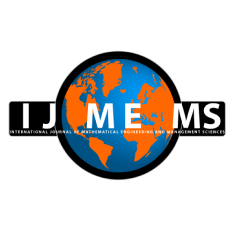M. Salmina
Graduate School of Mathematics and Applied Sciences, Universitas Syiah Kuala, Banda Aceh, Indonesia. & Department of Mathematics Education, Universitas Bina Bangsa Getsempena, Banda Aceh, Indonesia.
S. Munzir
Department of Mathematics, Universitas Syiah Kuala, Banda Aceh, Indonesia.
I. Syahrini
Department of Mathematics, Universitas Syiah Kuala, Banda Aceh, Indonesia.
V. Halfiani
Department of Mathematics, Universitas Syiah Kuala, Banda Aceh, Indonesia.
S. Rizal
Graduate School of Mathematics and Applied Sciences, Universitas Syiah Kuala, Banda Aceh, Indonesia. & Department of Marine Sciences, Universitas Syiah Kuala, Banda Aceh, Indonesia.
DOI https://doi.org/10.33889/IJMEMS.2025.10.1.006
Abstract
Dynamic models of higher education Key Performance Indicators (KPI) help in understanding how internal and external factors affect future KPI achievement. This study aims to construct a dynamic model of university KPI variables and estimate model parameters value. Several used steps to achieve goals are problem definition, variables, model formulation, prerequisite estimation, and conformity analysis. This model involves eight KPIs and three types of funding. Three optimization methods used are Type I constrained optimization, Type II constrained optimization, and unconstrained optimization. The results showed that the percentage of graduates getting decent jobs (KPI 1) in the future year is strongly influenced by two KPIs, namely the work of lecturers (KPI 5) and study programs with international accreditation (KPI 8). The existence of active practitioners (KPI 4) opens opportunities for international cooperation (KPI 6) and collaborative learning (KPI 7). Significant investment in improving the quality of lecturers and the right allocation of funds has proven to impact achieving the goals of higher education positively.
Keywords- Dynamic models, Key performance indicators, Data limitations, Parameter estimation, Optimization methods.
Citation
Salmina, M., Munzir, S., Syahrini, I., Halfiani, V., & Rizal, S. (2025). Dynamics Modeling for Key Performance Indicators in Higher Education Through Optimization Methods. International Journal of Mathematical, Engineering and Management Sciences, 10(1), 92-112. https://doi.org/10.33889/IJMEMS.2025.10.1.006.



